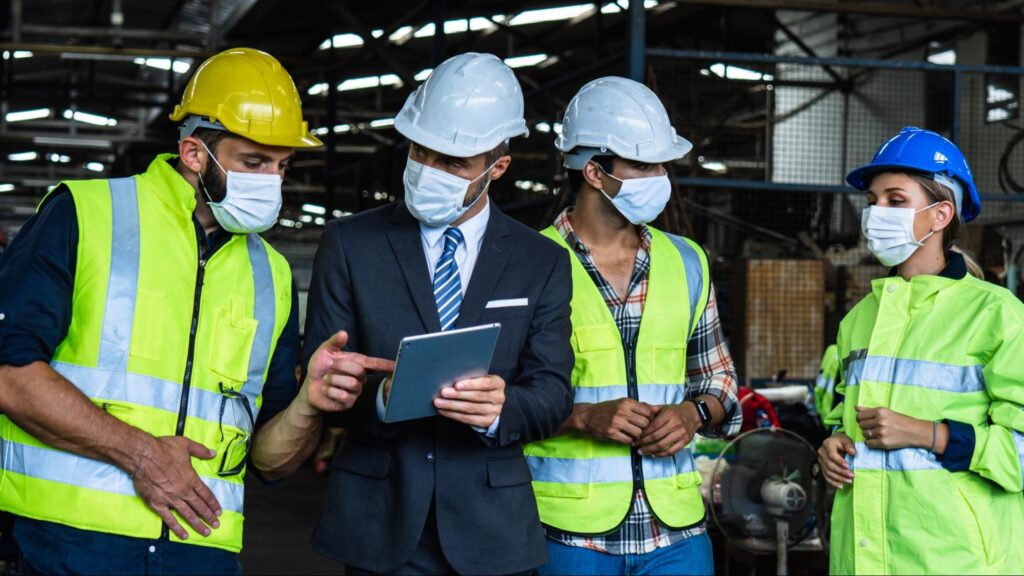Key Takeaways
- Understanding Safety Culture: Recognize the significance of shared safety values, beliefs, and practices.
- Leadership and Involvement: Ensure leadership commitment and employee participation in safety initiatives.
- Overcoming Challenges: Address resistance to change, training gaps, resource constraints, and communication barriers.
- Utilizing Digital Solutions: Leverage FAT FINGER’s digital workflows for efficient safety protocol implementation.
- Proactive Safety Management: Use tools like Take 5 Safety, Near Miss Reporting, and Job Hazard Analysis to proactively manage and mitigate risks.
- Continuous Improvement: Foster a culture of continuous improvement and open communication for enhanced safety.
Building and Maintaining A Safety Culture in the Oil and Gas Industry
The oil and gas industry is one of the most hazardous sectors in the world. Ensuring safety is not just a regulatory requirement but a moral obligation. Building and maintaining a safety culture is crucial for protecting lives, assets, and the environment.
This article delves into the importance of a safety culture, the challenges faced, and how digital solutions like FAT FINGER can help.
Request a demo today to see how FAT FINGER can revolutionize your safety protocols.
Understanding Safety Culture
Safety culture refers to the shared values, beliefs, and practices regarding safety within an organization. In the oil and gas industry, a robust safety culture is essential for preventing accidents and ensuring operational efficiency.
Key Elements of a Safety Culture
- Leadership Commitment: Leaders must prioritize safety and lead by example.
- Employee Involvement: Employees should be encouraged to participate in safety initiatives.
- Continuous Improvement: Regularly updating safety protocols based on new information and technologies.
- Open Communication: Encouraging transparent communication about safety concerns.
Challenges in Building a Safety Culture

Despite its importance, building a safety culture in the oil and gas industry comes with its own set of challenges.
Common Challenges
- Resistance to Change: Employees may resist new safety protocols.
- Lack of Training: Inadequate training can lead to unsafe practices.
- Resource Constraints: Limited resources can hinder the implementation of safety measures.
- Communication Barriers: Poor communication can lead to misunderstandings and accidents.
The Role of Digital Solutions
Digital solutions like FAT FINGER can play a pivotal role in overcoming these challenges. FAT FINGER offers powerful safety checklists that streamline safety protocols and ensure compliance.
Take 5 Safety
The Take 5 Safety checklist encourages employees to take five minutes to assess potential hazards before starting a task. This proactive approach can significantly reduce the risk of accidents.
Near Miss Reporting
Near Miss Reporting is crucial for identifying potential hazards before they result in accidents. FAT FINGER’s Near Miss Reporting checklist makes it easy for employees to report near misses, ensuring timely interventions.
Job Hazard Analysis
Job Hazard Analysis (JHA) involves identifying and mitigating risks associated with specific tasks. FAT FINGER’s JHA checklist provides a structured approach to hazard identification and risk mitigation.
Risk Assessment
Risk Assessment is essential for evaluating the potential impact of identified hazards. FAT FINGER’s Risk Assessment checklist helps in systematically assessing risks and implementing control measures.
Incident Reports
Incident Reporting is vital for understanding the root causes of accidents and preventing future occurrences. FAT FINGER’s Incident Reporting checklist ensures comprehensive documentation and analysis of incidents.
Journey Report
The Journey Report checklist is designed to ensure the safety of employees during travel. It includes pre-trip planning, risk assessment, and post-trip reviews to ensure safe journeys.
Statistics
- Organizations using digital safety solutions report a 25% reduction in incident rates.
- Companies with a strong safety culture experience 50% fewer accidents.
- Digital workflows can improve safety compliance by up to 40%.
Conclusion
Building and maintaining a safety culture in the oil and gas industry is a complex but essential task. Digital solutions like FAT FINGER can significantly simplify this process by providing structured, easy-to-use safety checklists. By leveraging these tools, organizations can overcome common challenges and ensure a safer working environment.
Create a safety workflow for free on FAT FINGER or request a demo today to see how it can transform your safety protocols.
FAQs Safety Culture in the Oil and Gas Industry
Q: What is safety culture?
Safety culture refers to the shared values, beliefs, and practices regarding safety within an organization. It emphasizes the importance of safety in every aspect of operations.
Q: Why is a strong safety culture important in the oil and gas industry?
A strong safety culture is crucial for preventing accidents, protecting lives, ensuring operational efficiency, and maintaining regulatory compliance in the hazardous oil and gas industry.
Q: What are the key elements of a safety culture?
- Leadership Commitment: Leaders prioritize and exemplify safety.
- Employee Involvement: Employees actively participate in safety initiatives.
- Continuous Improvement: Regularly update safety protocols based on new information.
- Open Communication: Encourage transparent discussions about safety concerns.
Q: What are common challenges in building a safety culture?
- Resistance to Change: Difficulty in adopting new safety protocols.
- Lack of Training: Insufficient training leading to unsafe practices.
- Resource Constraints: Limited resources for implementing safety measures.
- Communication Barriers: Poor communication causing misunderstandings and accidents.
Q: How can digital solutions like FAT FINGER help overcome these challenges?
FAT FINGER offers digital safety checklists, real-time data collection, and predictive analytics to streamline safety protocols and ensure compliance, addressing the common challenges in building a safety culture.
Q: How can I implement FAT FINGER in my workplace?
Request a demo through the FAT FINGER website to see how their digital workflows can enhance safety culture in your specific work environment.
Q: What specific tools does FAT FINGER offer for enhancing safety culture?
FAT FINGER provides tools such as Take 5 Safety, Near Miss Reporting, Job Hazard Analysis, Risk Assessment, Incident Reporting, and Journey Report to ensure comprehensive safety management.
Q: What are the benefits of using FAT FINGER for safety culture?
FAT FINGER improves operational efficiency, reduces incident rates, enhances safety compliance, and fosters a proactive safety culture through its digital solutions.

